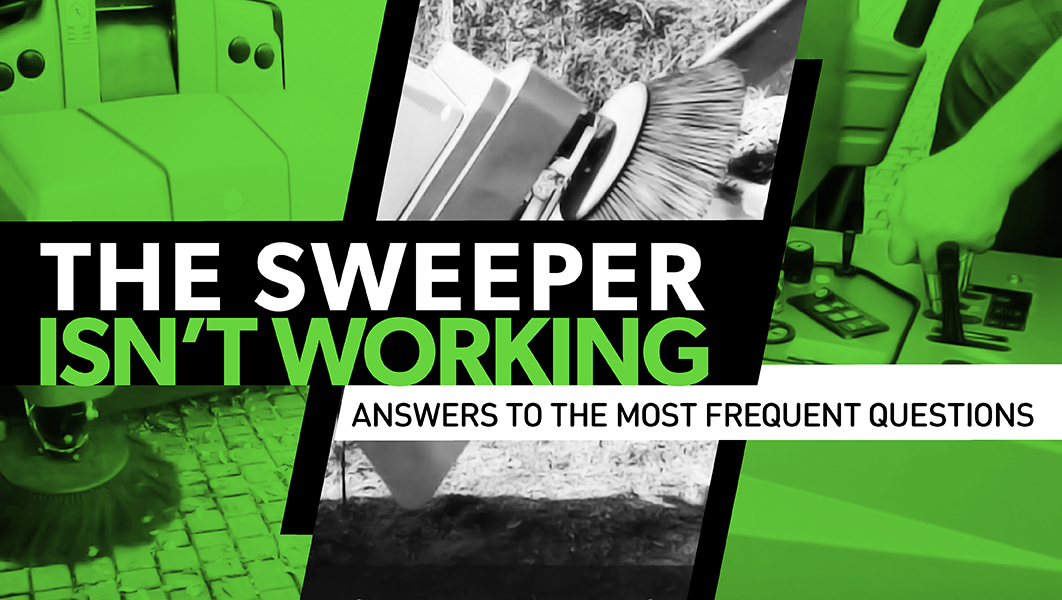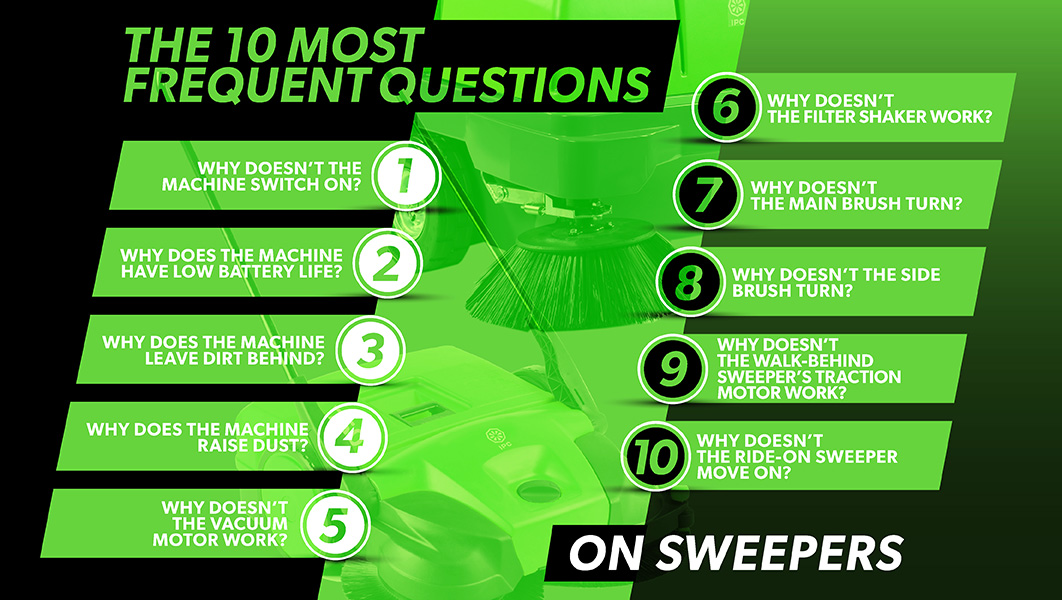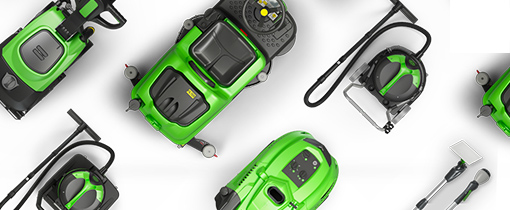
Estimated reading time: 5 minutes
Sweepers are a must-have for cleaning outdoor environments in the autumn: thanks to the mechanical action of the brushes, they make it possible to quickly remove dirt, dust, stones, leaves and small debris from floors and surfaces. They are mainly used in warehouses, in logistics facilities, in parking lots, in industrial buildings, as well as in sports and recreation facilities.
According to the size of the area to be cleaned, the frequency of use and the time available, it is possible to choose between walk-behind and ride-on sweepers. Compact-sized and easy to manoeuvre, walk-behind sweepers are ideal to clean small and medium surfaces. Thanks to the functional design and large debris container, they can easily remove debris such as leaves and bottles, even in narrow spaces. Ride-on sweepers, on the other hand, are extremely effective in cleaning medium and large surfaces. Fitted with exclusive technology, they are able to ensure high productivity and efficiency, while keeping maintenance costs low.
In order to prevent downtime in the peak season, in addition to periodically scheduling maintenance of the machine, one should also know how to act promptly, where possible, in the event of faults and malfunctions.
The sweeper isn’t working: quick guide for the 10 most frequent questions
Having machines down is a disservice, a cost and certainly a waste of time. That is why we have prepared a quick guide with possible solutions to the 10 most frequent questions.

1) Why doesn’t the machine switch on?
- First, you need to check the battery as it might be disconnected or down, in both battery and petrol versions.
- In the petrol/diesel versions, however, another cause of malfunction might be indeed the lack of fuel, or the fuel filters might be clogged.
- In both versions, the condition of the electric circuit fuses must be checked.
2) Why does the machine have low battery life?
- If the machine’s autonomy is short, the battery condition should be checked.
- In machines fitted with wet battery, check the electrolyte level and oxidation of the poles.
- If the battery is fine, look at the electric wiring connections, as they might be damaged or not properly connected.
3) Why does the machine leave dirt behind?
- If the machine leaves dirt behind, the cause might be the main brush or the flaps. Therefore, check the wear and adjustment of the brush as well as the flaps.
- Finally, empty the waste container, if it is full.
4) Why does the machine raise dust?
- The first thing to do is check the filter condition: it might be clogged, damaged or fitted incorrectly.
- If the problem is not the filter, ensure the vacuum motor works properly and that the side flaps are not damaged.
5) Why doesn’t the vacuum motor work?
- The fuse might be burnt, or the vacuum switch is OFF.
- Another cause might be the wear of the carbon brushes or electric motor issue.
6) Why doesn’t the filter shaker work?
- Check that the filter shaker power switch is pressed.
- If the switch is pressed and the filter shaker does not work, the filter shaker motor might be faulty.
- Check that the motor fuse is not burnt or that the wiring is not damaged.
7) Why doesn’t the main brush turn?
- If the main brush does not turn, check that the fuse is not burnt.
- In belt drive versions, check the tensions and/or condition of the belt.
- Take down the main brush and check for any foreign bodies that might hinder proper operation.
- Ensure the motor (electric/hydraulic) is not damaged.
8) Why doesn’t the side brush turn?
- If the side brush does not turn, you need to check the fuse or if the microswitch is working properly and is correctly set up, and finally if the wiring is connected.
- Check for any foreign bodies that prevent proper brush rotation.
- Check that the motor (electric/hydraulic) is not damaged.
9) Why doesn’t the walk-behind sweeper’s traction motor work?
- If the traction motor does not work, there might be a problem with the fuse.
- Check proper operation of the activation lever and proper tension of the drive belt.
10) Why doesn’t the ride-on sweeper move on?
- First, you need to ensure the parking brake is not engaged.
- Check that the hydraulic pump is not in neutral position.
- In battery-operated machines, ensure the direction selector works properly.
- Check that the activation microswitch on the seat works properly.
- If the problem persists, there might be a fault in the drive system.
Prevention is better than cure!
Considering the essential role played by sweepers in cleaning indoor and outdoor areas, their frequent and periodic maintenance is extremely important to prevent malfunctions and faults, and to increase their service life and performance. It is good practice to constantly check the components subject to hard wear such as brushes, filters and flaps. These simple actions, in addition to periodic overhauling, will contribute to maintain the sweeper efficient in the medium-long term.
For more information, visit our product page on sweepers!
Or send us your queries at info@ipcworldwide.com, we will be happy to provide all the support you may need.
Don’t forget to also follow us on our social media pages! Instagram – LinkedIn – YouTube
